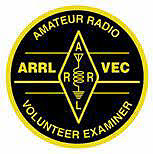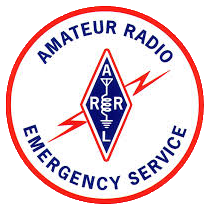In Best Power Practices I we discussed some general things to consider when hooking up your radio, both mobile and base.
Now we're going to discuss power considerations and the impact poor decisions regarding your power supply can have on your signal quality. We are assuming, for this discussion, that radios are rated for 12V operation, which is almost universal. HTs and other portable gear may have other operating voltages, so be aware!
First, most mobile rigs are designed to work at an operating voltage of 13.8V or thereabouts. Operating at lower voltages will usually result in lower power output, higher current draw, and could shorten the operating life of your radio; avoid operating much below 12V. Vehicle power systems operate at 13.8V because vehicle alternators historically provide something around that voltage to recharge the car battery. Car batteries are actually poor power sources for operating radios, as their intended purpose is to start your car, after which the alternator powers everything. Typical car batteries aren't really designed to provide significant current draw for significant periods of time. Additionally, conventional car batteries don't deal well with being discharged, and will often fail to hold a charge reliably after being run down more than once or twice.
For base installations, you'll see fixed voltage radio power supplies are also typically rated for 13.8V, since that's what the radios are typically looking for. If you have a variable voltage power supply, I'd suggest you set it for about 14V. Don't get carried away though, as too high a voltage setting will be more damaging than too little voltage; Capacitors on many radios are often rated for 16V maximum, and other components may be as well, so as you get beyond 14V you risk serious damage to radio components.
One very important consideration for your indoor AC power source is current. It's almost certain a vehicle's alternator or battery can source more than enough current for a mobile rig. However, you need to make sure your AC source sources enough current or you'll either not be able to transmit or your transmit audio will be poor. A common sign you are having power supply issues in this case is often a hum on your transmission.
If you intend to operate for EMCOMM, POTA, or SOTA you may want to consider supplementing your power with some alternative to your primary source. For instance, at home you may want to have a generator and fuel, or perhaps some battery backup system. In the case of vehicle operation you may want to have a 2nd battery for radio operation.
I have long used UPS or Marine batteries at my home. I run the power supply output to the battery and then run power from the battery to an Anderson Powerpole power distribution block, where my gear is plugged in. In this way, if the power goes out, the battery picks up the load and the equipment operates completely uninterrupted. Now that Lithium-Ion or Lithium-Iron-Phosphate batteries are more readily available and their prices are dropping, they may be better choices than conventional Marine/RV batteries. When using batteries indoors, consider the ventilation needs of the battery type. Marine and lithium batteries do not typically need ventilation, but conventional lead-acid (vehicle) batteries do.
Operations from your vehicle for EMCOMM, POTA, or SOTA while the vehicle is operating is not an issue, however extended operation from the battery could drain your battery to the point of not being able to start your car! I'd strongly suggest this issue be addressed, and there are a few ways to deal with this challenge.
The ideal situation is to have a secondary battery in your vehicle, ideally able to charge from your car's alternator. Avoid using standard car batteries and go with Marine or one of the Lithium chemistry batteries.
In my case, I replaced the standard car battery with the biggest Marine battery I could install. This is less than ideal, because I still only have one battery in my Tracker. However, being a smallish vehicle, I haven't come up with a desirable place to put a 2nd battery, due to the Tracker's small size. But, at least the deep cycle capability of the battery minimizes the possibility of the battery being damaged by draining it too far.
A more desirable installation would be to have a 2nd battery installed under the hood (some larger vehicles have room for a 2nd battery already there) or the trunk. A compromise may be to install a more moderately sized Lithium battery under a car seat, if you can't put a 2nd battery under the hood.
It is possible to have the 2nd battery charge when the vehicle's alternator is supplying power yet still be electrically isolated from the car's power distribution system, so you can run the radio off that battery and not risk running the car's starter battery down. Here you have the best of all words, the ability to run off battery without risk of running the starter battery down, and it'll always recharge off the vehicle's alternator when driving.
A less complex configuration might be to have a battery that you charge at home and bring with you. Again, Lithium chemistry batteries are light and have high power density, so would not be difficult to transport between home and vehicle if you wished to manually charge.
For some guidance on battery selection, amperage considerations, or even to learn a little more about battery power ratings, take a look at Power Source Considerations.
Note: This was modified 4/12/2025 after receiving emails regarding mobile operation from KQ4FCP (Terry) and WH6A (Daniel). Linking to "Power Source Considerations" was a direct result of Daniel mentioning LIFO battery technology.




